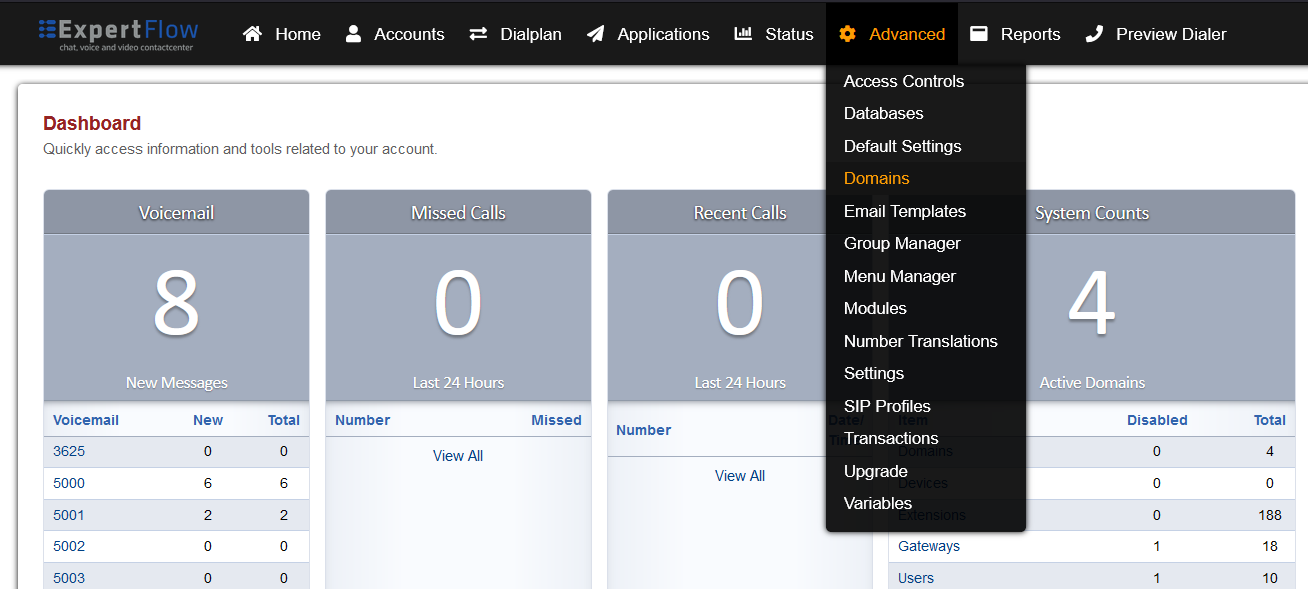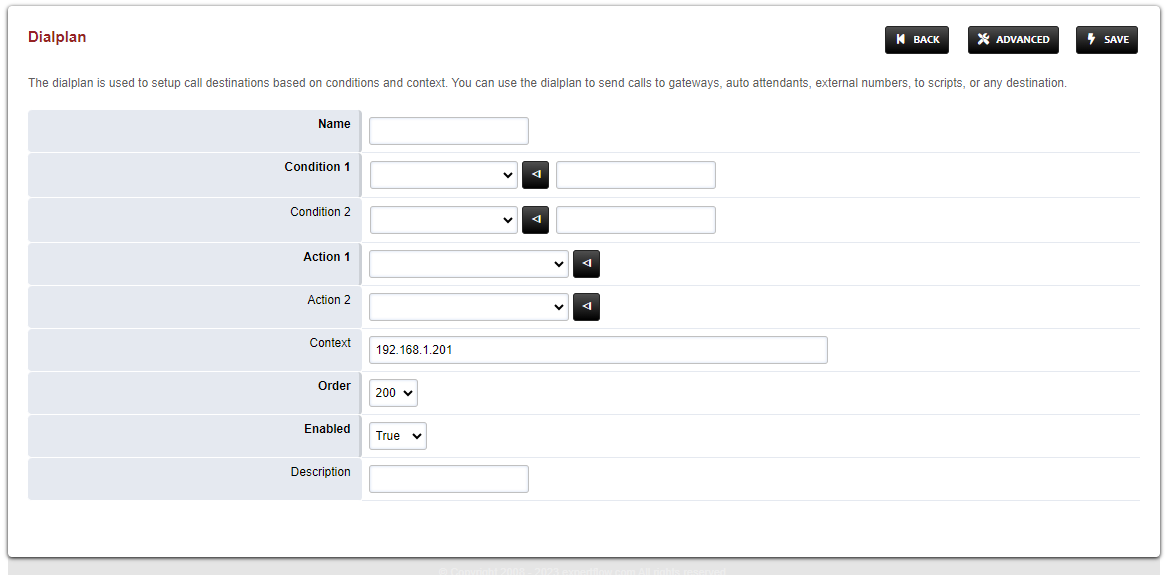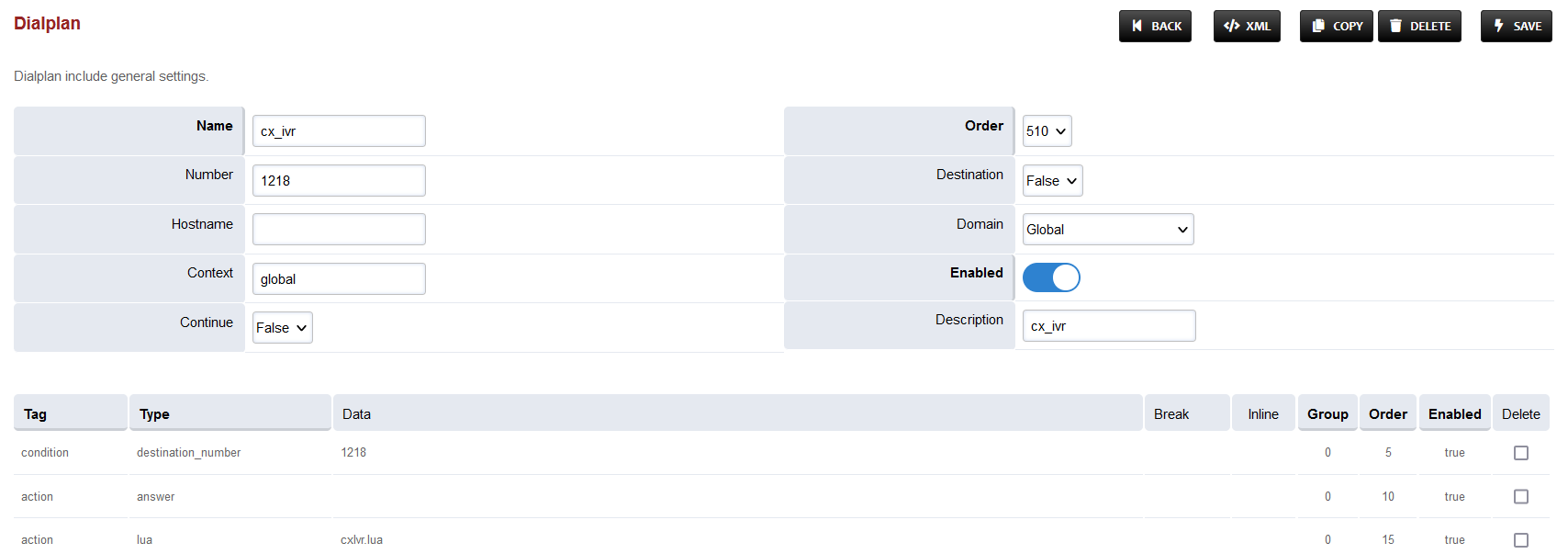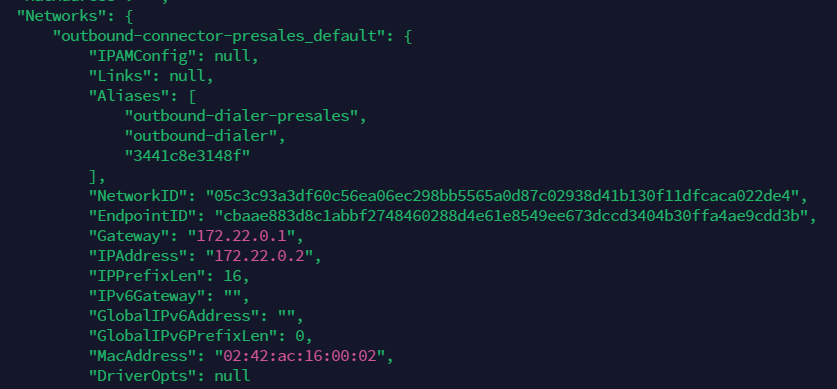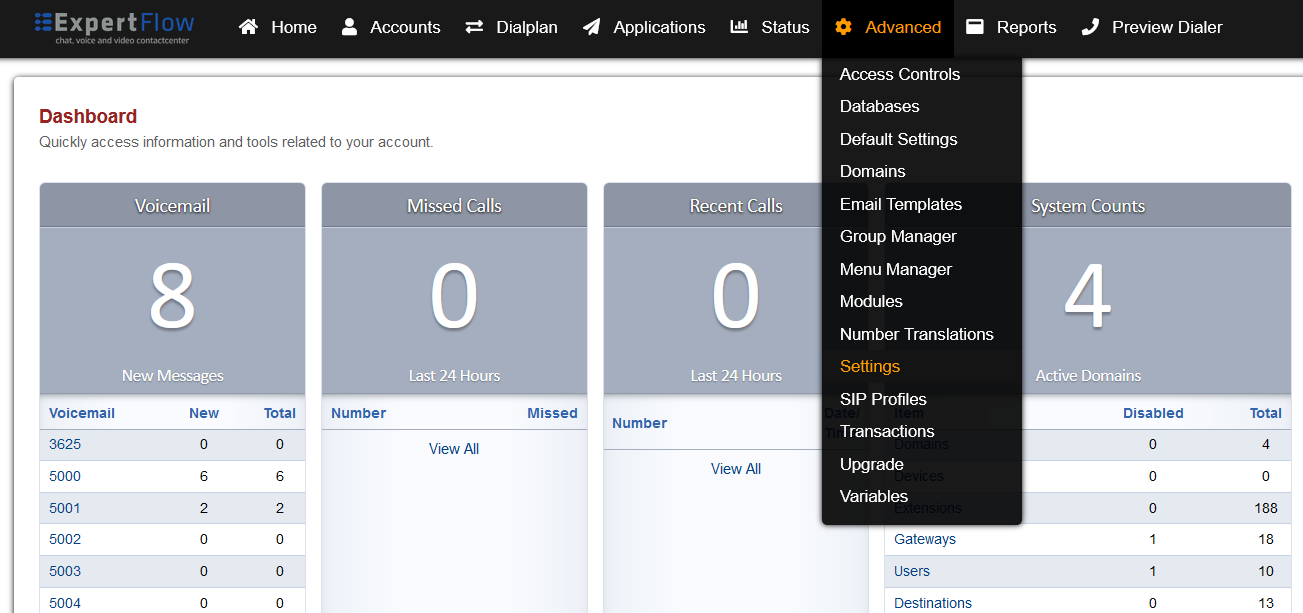EFSwitch Configurations for CX Voice
Requirements
Software Requirements
Item | Recommended | Installation guide |
EFSwitch | Latest version | |
EFCX | Latest version |
Install Lua libraries
SSH into the Debian server onto which EFSwitch is installed.
Use command
CODEssh username@server-ipEnter user password and press ENTER.
Use command
CODEsuEnter root password and press ENTER.
Run the following commands, one at a time:
- CODE
apt install lua-socket sudo apt install lua-sec sudo apt-get install lua-json sudo apt-get install -y lua-dkjson
Configure IVR scripts and recordings
Deployment
SSH into the Debian server onto which EFSwitch is installed.
Use command
CODEssh username@server-ipEnter user password and press ENTER.
Use command
CODEsuEnter root password and press ENTER.
Confirm git is installed, and install it if is not.
Clone the EFSwitch scripts repository:
CODEgit clone -b 4.5 https://efcx:RecRpsuH34yqp56YRFUb@gitlab.expertflow.com/rtc/freeswitch-scripts.gitNavigate to the cloned repository to access the files:
CODEcd freeswitch-scriptsAlter the file name of cx_env.lua to cx_env{DN}.lua where {DN} is the dialing number of the IVR (Set in the CxIvr Dialplan section below).
e.g. for an IVR with a dialing number of 1555 the file would be named cx_env1555.lua.
CODEmv cx_env.lua cx_env1555.lua
Move the files ending in .lua to the EFSwitch scripts folder:
- CODE
mv file-name /usr/share/freeswitch/scripts Move the ivr_prompts folder:
CODEmv ivr_prompts /usr/share/freeswitch/sounds/Assign read-write permissions to the ivr_prompts folder:
CODEchmod 777 -R /usr/share/freeswitch/sounds/ivr_prompts
Configuration
Open cx_env{DN}.lua :
CODEvi cx_env{DN}.luaPress the "I" key to enter editing mode.
The queueType field can contain one of two values:
'NAME'
''
The queue field can contain one of two types of values, based on what the queueType field above contains:
Name of the Agent Queue e.g. Support Queue (If queueType contains 'NAME') This name can be obtained from Unified Admin from the Queues section.
Empty string i.e. '' (If queueType contains '')
If queue and queueType are set to '' , then the call will be routed to the default queue set for the CX Voice channel in Unified Admin.
The voiceConnectorApi field will contain a URL in the following format:
http://VC-IP:VC-PORT/request-agent
Replace VC-IP and VC-PORT with IP address and port of the voice connector.
The cxFqdn field contains the fully qualified domain name of the EFCX:
https://devops.com/message/receive
Replace https://devops.com with the EFCX domain name.
The ivr_prompts_folder field contains path to the ivr_prompts folder. Leave it at the default value.
Save and exit the file by pressing the Esc key, entering :wq and pressing ENTER.
Domain Creation
Login to EFSwitch web interface.
Open in browser: https://IP-addr, where IP-addr is the IP address of the server that EFSwitch is deployed on.
Add the username and password that was shown upon installation of EFSwitch and press LOGIN.
Select the Domains option from the Advanced tab.
Select the ADD button on the top right.

Add the Fully Qualified Domain Name(FQDN) that was provided with the EFSwitch server, as shown in the image below:

Save the changes by pressing SAVE button in top right corner.
Configure Dialplans
CxIVR Dialplan
Login to EFSwitch web interface.
Open in browser: https://IP-addr, where IP-addr is the IP address of the server that EFSwitch is deployed on.

Add the username and password that was shown upon installation of EFSwitch and press LOGIN.
Press the IP address in the top right and select the Domain created in the Domain creation section above:

Open the Dialplan Manager section under the Dialplan tab.
Add a new Dialplan by pressing the Add Button on the top.
Fill the form with following details :
Name = CxIvr
Condition 1 = Select destination_number from list and add a dialing number, matching the {DN} value in the cx_env{DN}lua script filename set in the IVR scripts section above.
Action 1 = Select first item from the list
Save the form by pressing save button on top right Corner.
Re-open CxIvr dialplan.
Change action from transfer to lua and add cxIvr.lua into data column. it looks like this.
Set the Context field to the value of the Domain set in the Domain creation section.
Set the Domain field to the value of the Domain set in the Domain creation section.
Save the changes by pressing SAVE button in top right corner.
Direct-Transfer Dialplan
Login to EFSwitch web interface.
Open in browser: https://IP-addr, where IP-addr is the IP address of the server that EFSwitch is deployed on.
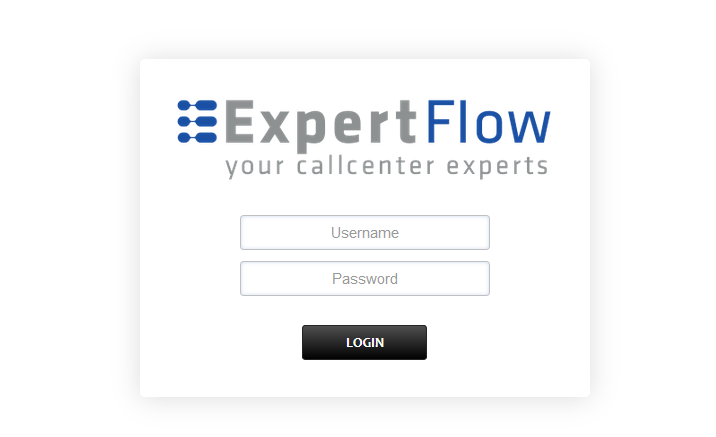
Add the username and password that was shown upon installation of EFSwitch and press LOGIN.
Press the IP address in the top right and select the Domain created in the Domain creation section above:

Open the Dialplan Manager section under the Dialplan tab.
Add a new Dialplan by pressing the Add Button on the top.
Fill the form with following details :
Name = CxQueue
Condition 1 = Select destination_number from list and add a random number
Action 1 = Select first item from the list
Save the form by pressing save button on top right Corner.
Re-open CxQueue dialplan.
Change the value of the Data column in the destination_number row to ^99887766[-0-9a-zA-Z]*$
Change the value of the Type column in the Action row to lua and the Data field to vcApi.lua 'directTransfer'
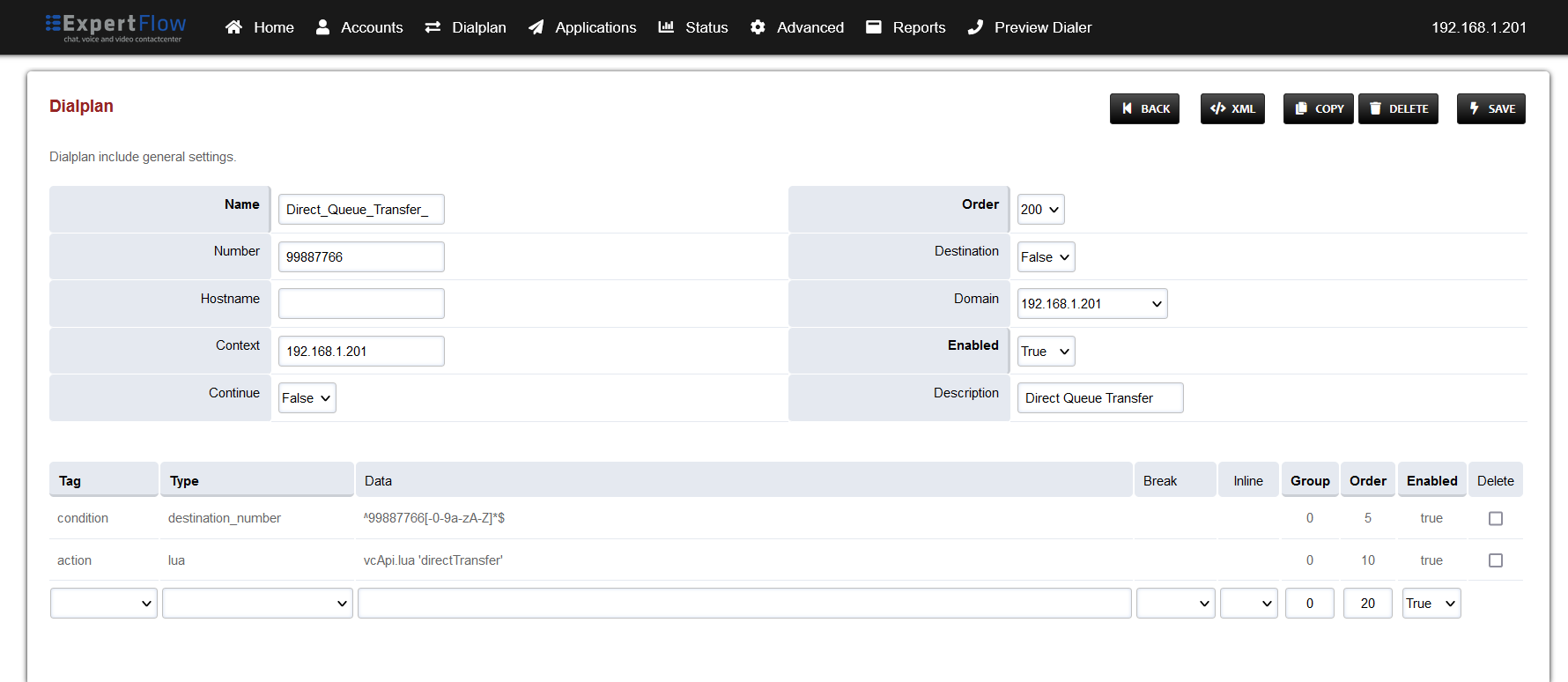
Set the Context field to the value of the Domain set in the Domain creation section.
Set the Domain field to the value of the Domain set in the Domain creation section.
Save the changes by pressing SAVE button in top right corner.
WebRTC Dialplan
Login to EFSwitch web interface.
Open in browser: https://IP-addr, where IP-addr is the IP address of the server that EFSwitch is deployed on.
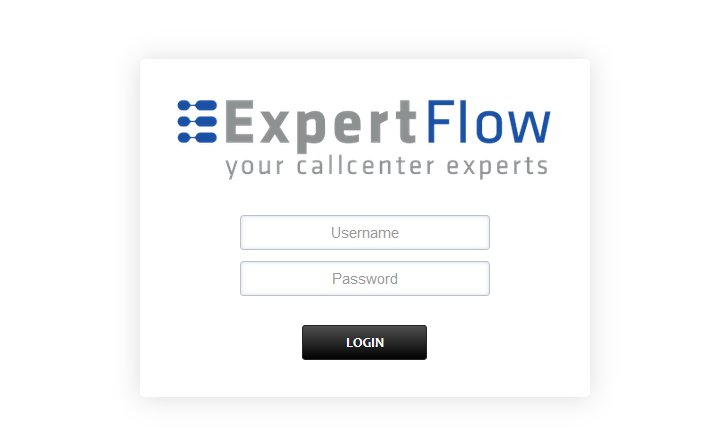
Add the username and password that was shown upon installation of EFSwitch and press LOGIN.
Press the IP address in the top right and select the Domain created in the Domain creation section above:

Open the Dialplan Manager section under the Dialplan tab.
Add a new Dialplan by pressing the Add Button on the top.
Fill the form with following details :
Name = webrtc
Condition 1 = Select destination_number from list and add the webRTC dialing number
Action 1 = Select first item from the list
Save the form by pressing save button on top right Corner.
Re-open webRTC dialplan.
Set the Context field to the value of the Domain set in the Domain creation section.
Set the Domain field to the value of the Domain set in the Domain creation section.
Progressive Outbound Dialplan
Login to EFSwitch web interface.
Open in browser: https://IP-addr, where IP-addr is the IP address of the server that EFSwitch is deployed on.

Add the username and password that was shown upon installation of EFSwitch and press LOGIN.
Press the IP address in the top right and select the Domain created in the Domain creation section above:

Open the Dialplan Manager section under the Dialplan tab.
Add a new Dialplan by pressing the Add Button on the top.
Fill the form with following details :
Name = Progressive Outbound Agent Transfer
Condition 1 = Select destination_number from list and set the value to agent
Action 1 = Select first item from the list
Save the form by pressing save button on top right Corner.
Re-open the Progressive Outbound Agent Transfer dialplan.
Set the Context field to the value of the Domain set in the Domain creation section.
Set the Domain field to the value of the Domain set in the Domain creation section.
Change the value of the Type column in the Action row to bridge and the Data field to user/${sip_h_X-agentExtension}@<DOMAIN>
Where DOMAIN is the value of the Domain set in the Domain creation section.
Changes in Local extension Dialplan
Login to EFSwitch web interface.
Open in browser: https://IP-addr, where IP-addr is the IP address of the server that EFSwitch is deployed on.
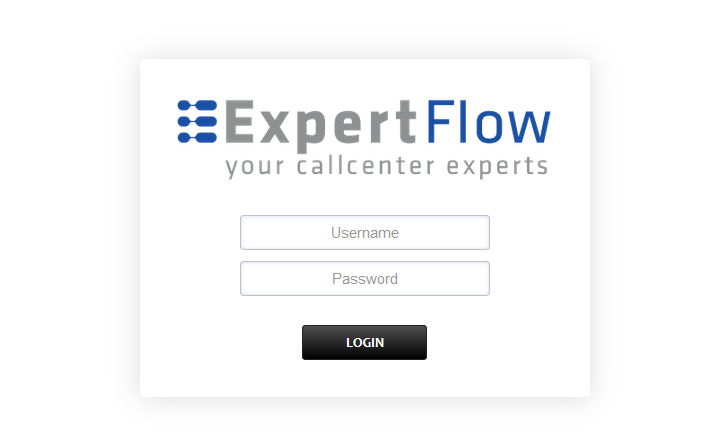
Add the username and password that was shown upon installation of EFSwitch and press LOGIN.
Press the IP address in the top right and select the Domain created in the Domain creation section above:

Open the Dialplan Manager section under the Dialplan tab.
Find and open the local_extension dialplan.
Add the following information to the last group:
action | lua | vcApi.lua 'rona' | 1 | 76 | true |
The result will look like this:
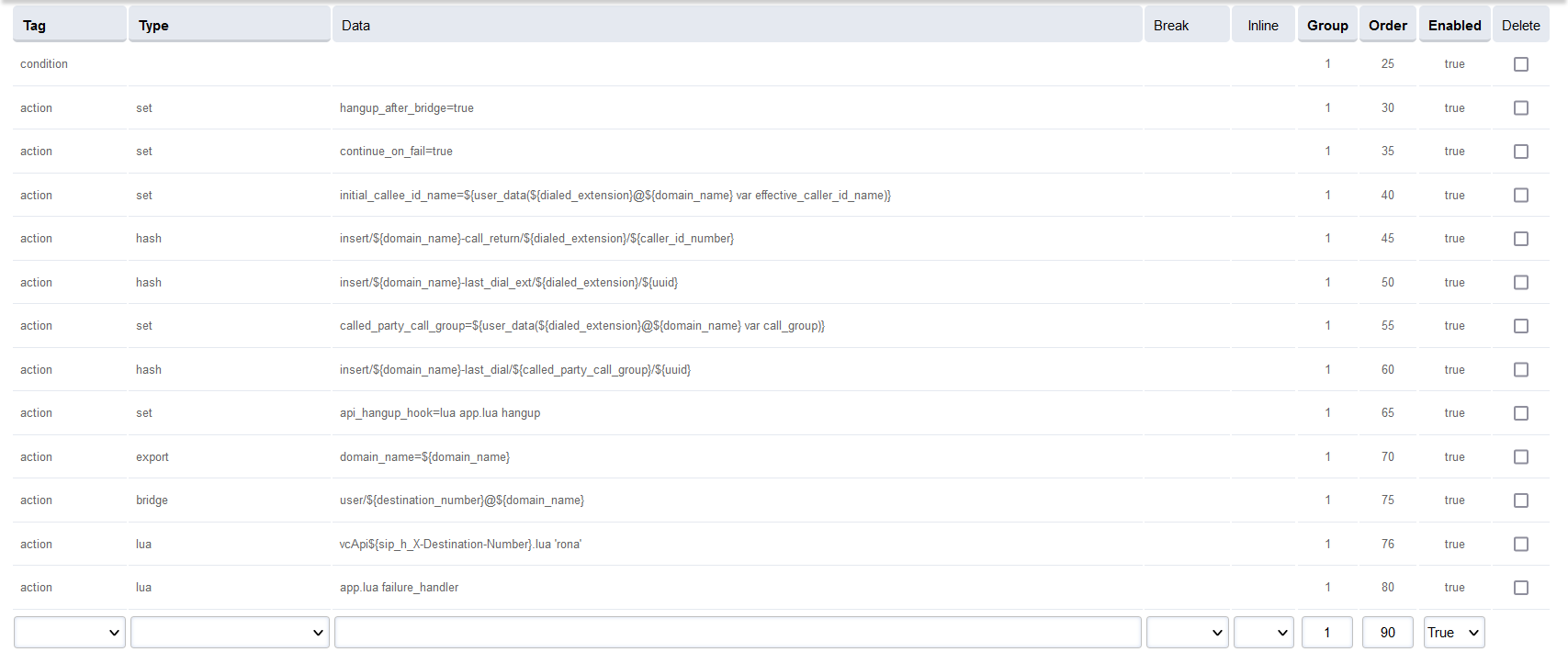
Note that the new line must be AFTER the bridge user/${destination_number}@${domain_name} line so if the Order of that line is 75 then the new line must have order 76 (as shown in the image above)
Save the changes by pressing SAVE button in top right corner.
Changes in Global Variables dialplan
Login to EFSwitch web interface.
Open in browser: https://IP-addr, where IP-addr is the IP address of the server that EFSwitch is deployed on.
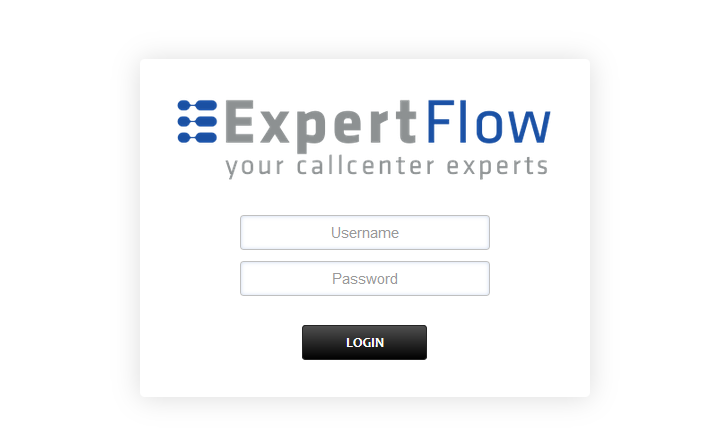
Add the username and password that was shown upon installation of EFSwitch and press LOGIN.
Press the IP address in the top right and select the Domain created in the Domain creation section above:

Open the Dialplan Manager section under the Dialplan tab.
Find and open the global-variables dialplan.
Add the following information to this dialplan (to add custom values in the Type column, select a random value then click on it to edit):
Tag | Type | Data | Group | Order | Enabled |
|---|---|---|---|---|---|
condition | ${sip_h_X-CALL-ID} | ^$ | 2 | 5 | true |
action | set | sip_h_X-CALL-ID=${sip_call_id} | 2 | 10 | true |
action | set | sip_rh_X-CALL-ID=${sip_call_id} | 2 | 15 | true |
Tag | Type | Data | Group | Order | Enabled |
|---|---|---|---|---|---|
condition | ${sip_h_X-CALL-VARIABLE0} | ^$ | 3 | 5 | true |
action | set | sip_h_X-CALL-VARIABLE0=${uuid} | 3 | 10 | true |
action | set | sip_rh_X-CALL-VARIABLE0=${uuid} | 3 | 15 | true |
Tag | Type | Data | Group | Order | Enabled |
|---|---|---|---|---|---|
action | export | sip_h_X-CALL-ID=${sip_h_X-CALL-ID} | 4 | 5 | true |
action | export | sip_rh_X-CALL-ID=${sip_h_X-CALL-ID} | 4 | 10 | true |
action | export | sip_h_X-CALL-VARIABLE0=${sip_h_X-CALL-VARIABLE0} | 4 | 15 | true |
action | export | sip_rh_X-CALL-VARIABLE0=${sip_h_X-CALL-VARIABLE0} | 4 | 20 | true |
The result will look like:
Save the changes by pressing SAVE button in top right corner.
Configure SIP Trunk(Gateway) for outbound calls
Login to EFSwitch web interface.
Open in browser: https://IP-addr, where IP-addr is the IP address of the server that EFSwitch is deployed on.
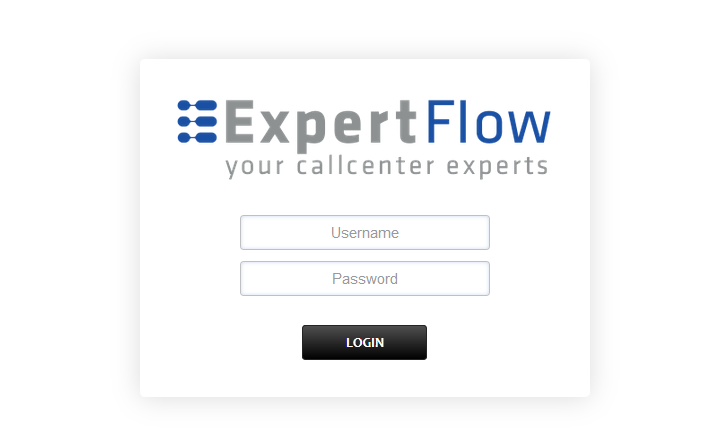
Add the username and password that was shown upon installation of EFSwitch and press LOGIN.
Press the IP address in the top right and select the Domain created in the Domain creation section above:
Open the Gateways section under the Accounts tab.

Press the ADD button in the top right.

Set the following fields:
Gateway: A name of your choice e.g. MySipTrunk
Username: The username of the SIP Trunk. Not needed for IP-based SIP trunks.
Password: The password of the SIP Trunk. Not needed for IP-based SIP trunks.
Proxy: The IP address and port of the SIP trunk e.g. 192.168.25.35:5060.
Register: Set to True. Set to False for IP-based SIP trunks.
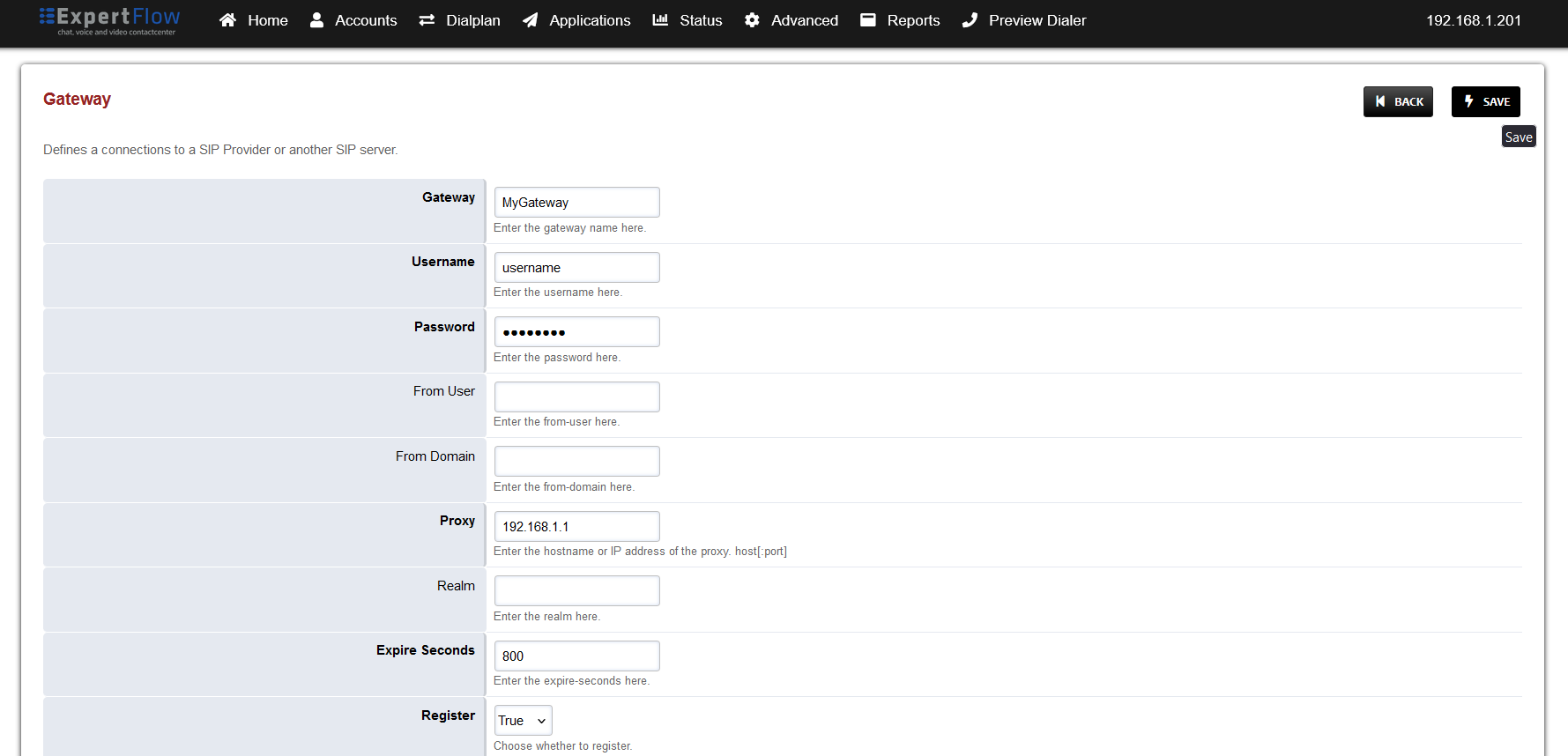
Press the SAVE button on the top right.
Open this newly created gateway and note the URL opened in the browser.

Add the IP address of the SIP trunk to the EFSwitch ACL:
Open SIP Profiles under the Advanced tab.

Open the external profile and note the value of the apply-register-acl field.

Open Access controls under the Advanced tab.

Open the entry that matches the aforementioned apply-register-acl field.

At the bottom add an entry where the the Type is set to ‘allow’ and the CIDR field contains the address of the SIP Trunk.
Press the SAVE button on the top right.
Open SIP Status under the Status tab.

Press the Reload ACL button at the top right.'
Open SIP Profiles under the Advanced tab.

Open the external profile and note the value of the sip-port field.

Back out via the BACK button on the top right.
Open the internal profile and note the value of the sip-port field.

Open a terminal and SSH into the EFSwitch machine via the command
- CODE
ssh EFSwitch-Server-Username@EFSwitch-Server-IP-Address
Enter the EFSwitch server SSH password when prompted.
Enter and run the command
- CODE
su
And enter the EFSwitch server root password.
Run the command
- CODE
sudo iptables -A INPUT -p tcp -m tcp --dport PORT -j ACCEPT Where PORT is the port noted down in the previous steps. Run the command once for each port.
Run the command
- CODE
sudo iptables-save
Contact the SIP Trunk provider and have all traffic from the EFSwitch machine public IP address allowed.
Configuring route For Outbound calls
Login to EFSwitch web interface.
Open in browser: https://IP-addr, where IP-addr is the IP address of the server that EFSwitch is deployed on.

Add the username and password that was shown upon installation of EFSwitch and press LOGIN.
Press the IP address in the top right and select the Domain created in the Domain creation section above:
Open the Outbound Routes section under the Dialplans tab.

Press the ADD button in the top right.

Set the following fields :
Gateway = The name of the gateway configured above.
Dialplan Expression = The format of the number accepted by the SIP trunk e.g. for 11 digits the format is ^(\d{11})$
Press the SAVE button on top right Corner.
Configuring route For Inbound calls
Login to EFSwitch web interface.
Open in browser: https://IP-addr, where IP-addr is the IP address of the server that EFSwitch is deployed on.

Add the username and password that was shown upon installation of EFSwitch and press LOGIN.
Press the IP address in the top right and select the Domain created in the Domain creation section above:
Open the Destinations section under the Dialplans tab.

Press the ADD button in the top right.

In the Destination field set the inbound dialing number provided by the SIP trunk provider.
Press the SAVE button on top right Corner.
Open the Inbound Routes section under the Dialplans tab.

Press the ADD button in the top right.

Set the following fields :
Name = A name of your choice.
Destination Number = The destination created above.
Action = From the Extensions list select the number chosen as the destination number in the CxIvr dialplan section above.
Press the SAVE button on top right Corner.
Configure Access Control List (ACL)
For the Voice Connector and Dialer to be able to access the Freeswitch ESL for communicating with EFSwitch, their IP address must be added to the ACL.
Login to EFSwitch web interface.
Open in browser: https://IP-addr, where IP-addr is the IP address of the server that EFSwitch is deployed on.
Add the username and password that was shown upon installation of EFSwitch and press LOGIN.
Press the IP address in the top right and select the Domain created in the Domain creation section above:
Open the Access Control List from the Advanced tab.
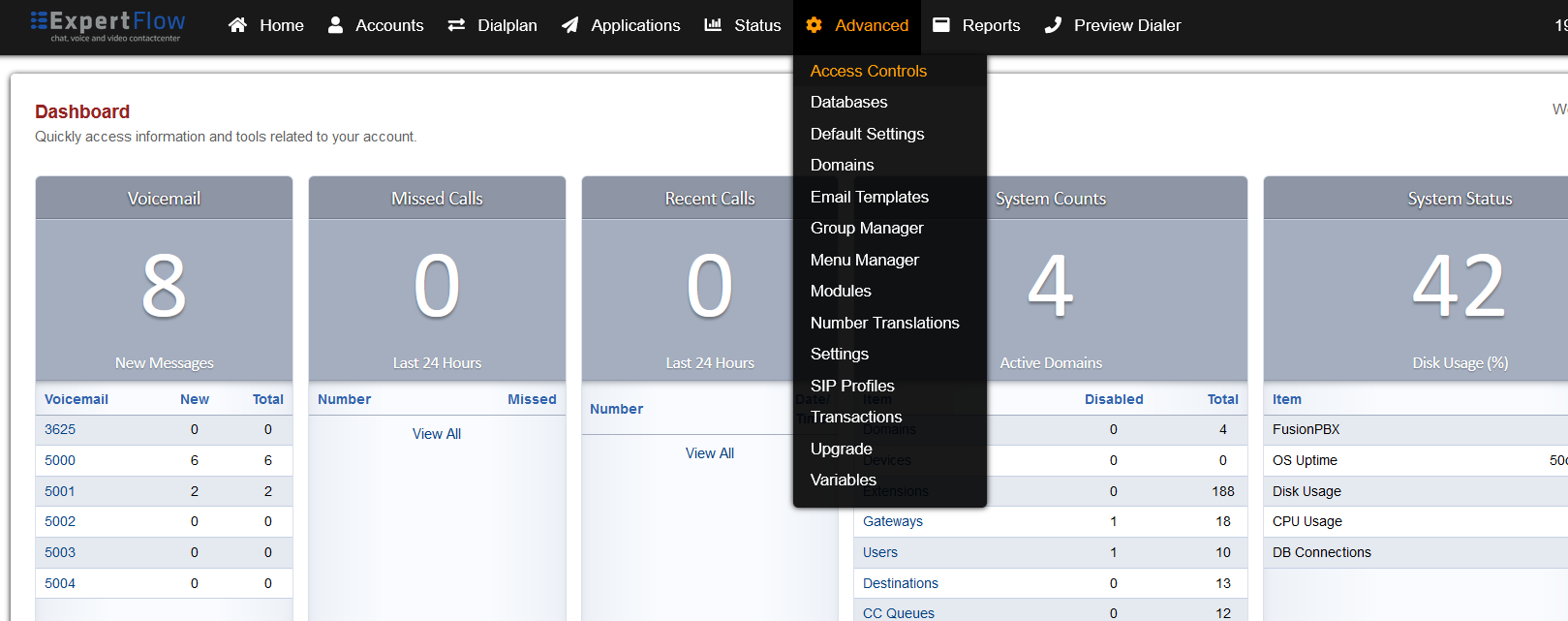
Create a new ACL with the Add button.

Set the name to esl, the Default to allow and add the following IP addresses:
127.0.0.1
The IP address of the server the EFSwitch is running on e.g. 192.168.1.17.
The IP address of the server the Voice connector is running on e.g. 192.168.1.201.
The IP address of the server the Dialer is running on e.g. 192.168.1.106.
Lastly, add the IP addresses of the docker containers for the Voice connector and Dialer.
On the Voice connector and Dialer servers, use the command docker ps to list the containers.
Run the command:
- CODE
docker inspect containerID
Scroll down to the Networks object and find the Gateway and IPAddress fields.
Copy these two addresses to the esl ACL.
Make sure to do this process for both the Voice connector and dialer.
Click the Save button and go to the SIP Status with from the Status tab.
Click the Reload ACL button on the top right.
Configure Event Socket Library (ESL)
Login to EFSwitch web interface.
Open in browser: https://IP-addr, where IP-addr is the IP address of the server that EFSwitch is deployed on.
Add the username and password that was shown upon installation of EFSwitch and press LOGIN.
Press the IP address in the top right and select the Domain created in the Domain creation section above:

Open Settings from the Advanced tab. (If the option is unavailable, skip to step 6)
Change the Event Socket IP Address to 0.0.0.0, and the Event Socket ACL to esl.
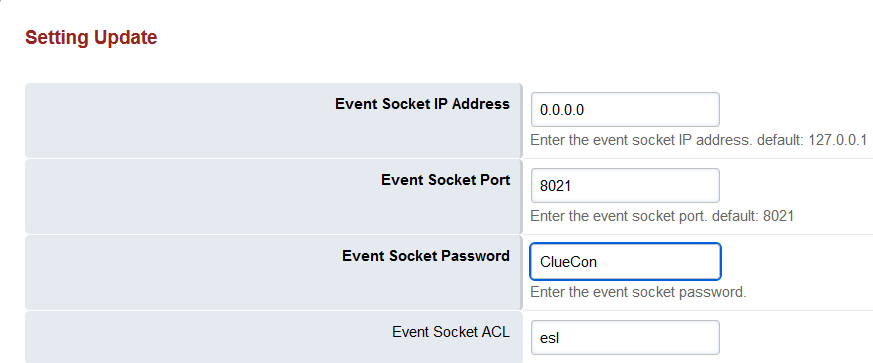
Optionally, change the Event Socket Password to the a different value, or leave as default ClueCon.
If the password is changed, then the same must be set in the environment files for the voice connector and dialer.
If the password is changed, update it in the environment variables for the and Dialer docker containers.
SSH into the Debian server onto which EFSwitch is installed.
Use command
CODEssh username@server-ip
Enter user password and press ENTER.
Use command
CODEsuEnter root password and press ENTER.
If the Settings option in Step 4 was unavailable, then run the following command
CODEecho '<configuration name="event_socket.conf" description="Socket Client"> <settings> <param name="nat-map" value="false"/> <param name="listen-ip" value="0.0.0.0"/> <param name="listen-port" value="8021"/> <param name="password" value="PASSWORD"/> <param name="apply-inbound-acl" value="esl"/> </settings> </configuration>' > /etc/freeswitch/autoload_configs/event_socket.conf.xmlIn following command replace customEslPass with your chosen password, then run the command
CODEsed -i 's/PASSWORD/customEslPass/g' /etc/freeswitch/autoload_configs/event_socket.conf.xml
Run the command to restart EFSwitch with the new ESL settings:
CODEsystemctl restart freeswitchLog out of the EFSwitch web interface and log back in.
Set EFSwitch Call Limits
SSH into the Debian server onto which EFSwitch is installed.
Use command
CODEssh username@server-ipEnter user password and press ENTER.
Use command
CODEsuEnter root password and press ENTER.
Open the EFSwitch config file
CODEvi /etc/freeswitch/autoload_configs/switch.conf.xmlLocate the following line and replace 1000 with 100000
CODE<param name="max-sessions" value="1000"/>Locate the following line and replace 30 with 100000
CODE<param name="sessions-per-second" value="30"/>Run the command to restart EFSwitch with the new ESL settings:
CODEsystemctl restart freeswitch



